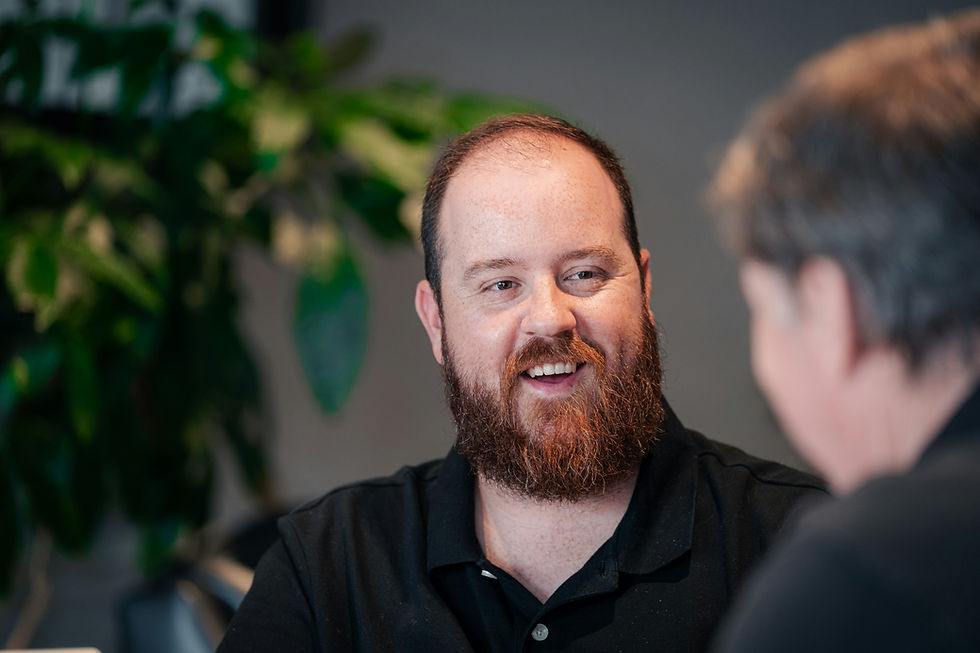Step By Step Guide: Your First Broadcast Interview
- Bulletproof Staff
- Apr 13, 2023
- 3 min read
Updated: May 6, 2024
Were you asked to participate in a broadcast interview? It is certainly a big step in your career but serious nerves are not uncommon when it comes to being in the spotlight. The only way to a successful broadcast interview is preparing yourself, and getting professional media training in Toronto is the best way to start.
Before getting into the details, ask yourself what exactly you want to get out of the interview. Do you need exposure for your brand? Or, do you wish to address some pressing issue about your business? Whatever your objective might be, ensure that you are effectively armed with relevant answers to anticipated questions - both easy and challenging - that may be thrown on your way. Reliable corporate media training can assist you in the process.
How to Prepare for the First Broadcast Interview?
Whether it is prime time or a local news channel, the stakes are high with broadcast interviews. It is because there is minimal margin for error and episodes posted online can live on for several years. With professional corporate media training, you can ace your first-ever broadcast interview. Here are six steps to help you prepare better:
1. Understand Different Types
Before stepping in, it is crucial to understand that broadcast interviews are not just about radio or TV appearances. They can take place in radio & TV studios, on doorsteps, outside, live to tape, pre-recorded, podcast interviews, and even Zoom or Teams. All the interview variations will have specific formats. Make sure that you are aware of the common formats you might have to face.
2. Prepare Yourself Well
Preparing beforehand is crucial to ensuring the overall success of the interview. Study your topic of interview thoroughly. Read about the entire project, go through internal resources, and also get your friends or industry professionals to weigh in their opinion.
Mentally prepare yourself on the most standard concepts and facts about the topic with the simplest explanations for the same. Understand your topic well such that you are able to answer almost any question about it.
3. Ensure Effective Delivery of the Key Messages
Being prepared also comes with developing the narrative you want to deliver and making sure you have prepared statements and key messages to communicate throughout the interview. During professional media training in Toronto, you will learn how to focus on one big idea, supported by key messages as you prepare for broadcast interviews. To top it all, you should ensure that the messages are memorable and resonate with your interviewer, audiences and stakeholders. While delivering your message appropriately, you need to make sure that it is available across in the shortest possible period. A radio interview could last only for around two minutes. Therefore, do not wait -simply take control. Also, do not hesitate to repeat your message.

4. Understand Different Interview Questions
One of the most common fears related to interviews, especially live broadcasts, is that questions can be quite challenging. An interviewer is bound to ask difficult questions. To top it all, you might be asked different types of questions in the first place. As you watch politicians, you will realize that they tend to evade difficult questions. However, you should not practice this method. While it might be challenging, you should still speculate difficult questions and prepare yourself to answer them well. Professional corporate media training courses can help significantly.
5. Maintain Composure
In the most difficult interviews, it is common for you to lose patience or calm. Still, when things might go out of control, avoid criticizing the journalist under all circumstances. Radio listeners and TV audiences will be more sympathetic when you maintain your calm even in the most difficult situations. Take on the leadership role in the interaction. You are there because you know the topic better than anyone and it's your job to guide the content of the interview.
6. Incorporate Visual Storytelling
Since broadcast interviews are televised, you can use your clothes and body language to carry the brand message forward. Using visuals like data, graphs, images, and videos, can also be used to pull in your audience's attention.
7. Use digital tools for mock interviews
These tools will help you review your performance, adjust your approach, and improve your interaction skills, making you more adept at handling live scenarios.
One of the best ways to prepare for broadcast interviews is by leveraging comprehensive media training classes or courses. Our experienced media training specialists at Bulletproof Media Training are happy to guide you through the process of complex interviews and how you can handle them effortlessly.
We offer virtual 24/7 and in-person media training in Toronto, so you’re confident and prepared. Get in touch today for more details.



Comments